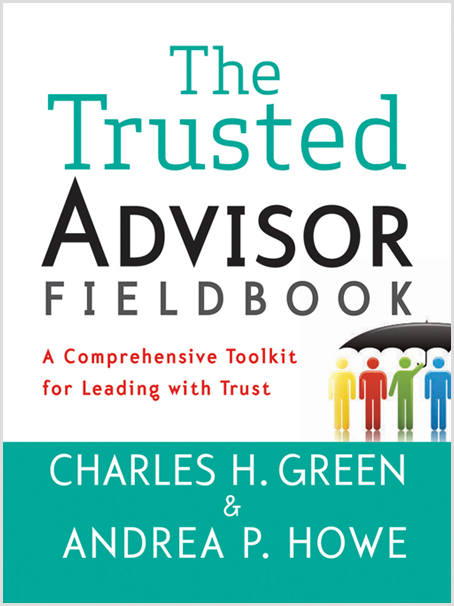This post is part of our Weekly Tips series.

Last week’s tip focused on what I’ve recently come to call “micro-moments,” and how you train yourself to respond in them. I included concrete suggestions for the most trustworthy responses in two scenarios. This week, I add two more.
We’ve already covered (1) how you reply to a client’s urgent request for help with a problem (refresh: you have to get out of problem-solving mode, at least for a bit), as well as (2) what to say when someone’s emotional reaction triggers you (ditto, and in this case masterful listening is key). Now, here are two more cases:
- How do you say something that’s uncomfortable without hurting trust? More than a dozen years ago, Charlie Green taught me a gem of a technique called Name It and Claim It. “Name It” refers to speaking difficult truths out loud, which then makes it OK for everyone to talk about them—that’s the “Claim It” part.
- “This is a little uncomfortable …”
- “There’s no easy way to say this …”
- “This is definitely awkward …”
- “I’m not sure what to say …”
- “I honestly have no idea how you’re going to react to this …”
Caveats—spoken genuinely and without a “but” or “however” to follow—make it easier for the one who has to say something uncomfortable (you) to enter into the conversation in the first place. They’re little inertia-busters that also reveal our humility, vulnerability, and caring.
And when it comes to getting off on the right foot in a challenging micro-moment, there’s a lot to like about all of that.
- What do you do when your fears are activated? This happens to all of us, more regularly than most of us care to admit. Why? Because, simply stated, relationship-building taps into our primal fears.
Charlie has done some great work here too, by writing a game-changing article defining specific types of fear to attend to in our relationships (he referred to them as “sharks”). When we’re (irrationally) afraid we don’t know enough, or might not do something right, or may not get the outcome we want/need, or (my all-time favorite) may not be liked/respected in the ways we crave, we get triggered. Left un-managed, those triggers can cost us in terms of trust.
Of my four favorite best practices for dealing with the sharks of fear, my favorite for micro-moments is to speak your fear out loud. Imagine yourself saying things like, “I must confess to feeling a little intimidated by this conversation” or “I don’t know the answer to that.” It’s key to speak with the right balance of confidence and humility, of course. Too much bravado and the phrases sound false; too much modesty and we sound lame.
As I said last week, it’s vastly easier to set a more trustworthy tone and course when we get started on the right foot. That’s why those who aspire to be true trusted advisors cultivate good habits at this granular level.
Make It Real
This week, make time with a colleague to do more drill practice (sorry, not sorry) to get better at your own micro-moment responses.
Learn More

Read more about why fear is always the enemy, from our friends at Trusted Advisor Associates, or refresh on what it means to “think out loud” in Chapter 8 of The Trusted Advisor Fieldbook.
Andrea Howe
Latest posts by Andrea Howe (see all)
- A lesson from my own trust “fail” in my first-ever client meeting - April 15, 2024
- Why choosing silence in the face of awkwardness can be a trust tragedy - March 21, 2024
- What NOT to do when you think you’re being ghosted - February 21, 2024
